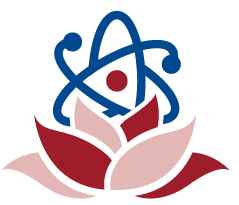| organ donor དབང་པོ་སྦྱིན་མཁན། | biol. A person who donates an organ or organs from their body for transplantation. | དབང་པོ་སྤོ་འཛུགས་བྱེད་པའི་ཆེད་དུ་རང་ཉིད་ཀྱི་ལུས་པོ་ནས་དབང་པོ་གཅིག་གམ་དུ་མ་སྦྱིན་མཁན་གྱི་གང་ཟག་ལ་གོ |
| organ འབུད་རོལ། (རོལ་ཆས་ཤིག) | mus. | |
| organ དབང་པོ། ལུས་ཀྱི་དབང་པོ། | biol. A group of tissues that perform a specific function or group of functions. | བྱེད་ལས་ངེས་ཅན་གཅིག་གམ་བྱེད་ལས་ཁག་ཅིག་སྒྲུབ་མཁན་གྱི་ཕུང་གྲུབ་ཀྱི་སྡེ་ཚན་ཞིག་ལ་གོ |
| orexin དང་སད་འཕྲིན་པ། | neurosci. Either of two neuropeptide hormones synthesized in the hypothalamus that regulate sleep and wakefulness and whose dysfunction causes narcolepsy. | ཀླད་སྦུག་འོག་མའི་ནང་དུ་སྦྱོར་སྡེབ་བྱེད་ཅིང་སད་གཉིད་གཉིས་ལ་ཚོད་འཛིན་བྱེད་མཁན་གྱི་དབང་རྩའི་སྤྲི་རྩི་གཉིས་ལས་གང་རུང་ཞིག་ལ་གོ་ཞིང་། འདི་ཡི་བྱེད་ལས་འཆོལ་བ་ལ་བརྟེན་ནས་གཉིད་འབོག་འབྱུང་གི་ཡོད། |
| Ordovician period མཚོ་རྒྱས་དུས་རབས། | biol. | |
| order pair རིམ་ཆ། | | |
| order གྲལ། | biol. A principal taxonomic category that ranks below class and above family. | ཚན་པའི་འོག་དང་ཁྱིམ་གྱི་སྟེང་དུ་ཡོད་པའི་དབྱེ་བསྡུ་རིག་པའི་ནང་གི་སྡེ་ཚན་གལ་ཆེན་ཞིག |
| orchestra རོལ་རྩེད་རུ་ཁག | phys. A large group of musicians who play together on various instruments, usually including strings, woodwinds, brass instruments, and percussion instruments. | སྤྱིར་བཏང་རྒྱུད་སྐུད་ཅན་གྱི་རོལ་ཆ་དང་། ཤིང་བཟོས་འབུད་རོལ། རག་གི་རོལ་ཆ། རྡུང་བྱའི་རོལ་ཆ་ལ་སོགས་པའི་རོལ་ཆ་སྣ་ཚོགས་མཉམ་དུ་འབུད་རྡུང་དཀྲོལ་གསུམ་བྱེད་མཁན་གྱི་རུ་ཁག་ཆེན་པོ་ཞིག་ལ་གོ |
| orbitofrontal cortex མིག་མདུན་ཀླད་ཤུན། | neurosci. The area of the cerebral cortex located at the base of the frontal lobes above the orbits (or eye sockets), involved especially in social and emotional behavior. | མིག་ཀོང་ཐོད་ཀྱི་མདུན་འདབ་ཀྱི་མཐིལ་དུ་ཆགས་པའི་ཀླད་ཆེན་ཀླད་ཤུན་གྱི་ས་ཁུལ་ལ་ཟེར་ཞིང་། འདི་ནི་ལྷག་པར་དུ་སྤྱི་ཚོགས་དང་འབྲེལ་བའི་གཤིས་སྤྱོད་དང་། སེམས་མྱོང་དང་འབྲེལ་བའི་གཤིས་སྤྱོད་གཉིས་ལ་འབྲེལ་བ་ཡོད་པ་ཡིན། |
| orbit སྐོར་བ། སྐོར་བ་རྒྱག་པ། འཁོར་ལམ། | phys. The path through space of one celestial body about another. | མཁའ་དབྱིངས་ཀྱི་དངོས་གཟུགས་ཤིག་གཞན་ཞིག་གི་མཐའ་རུ་སྐོར་བ་བྱེད་སའི་བར་སྣང་གི་འཁོར་ལམ། |
| oral cavity ཁའི་བུ་ག | biol. The space in the mouth that contains the teeth, salivary ducts, and tongue. | སོ་དང་། མཆིལ་མའི་སྦུ་གུ ལྕེ་བཅས་ཡོད་སའི་ཁ་ནང་གི་སྟོང་ཆ་ལ་གོ |
| optogenetics འོད་སྤྱད་རིགས་རྫས་རིག་པ། འོད་སྤྱད་རིགས་རྫས། | biol. A technique in neuroscience in which genes for light-sensitive proteins are introduced into specific types of brain cells in order to monitor and control their activity precisely using light signals. | འོད་བརྡ་ལ་བརྟེན་ནས་ཀླད་པའི་ཕྲ་ཕུང་ཁག་ཅིག་གི་བྱེད་ལས་ལ་བྱ་ར་དང་སྟངས་འཛིན་ཏག་ཏག་བྱེད་པའི་ཆེད་དུ། ཀླད་པའི་ཕྲ་ཕུང་རིགས་ངེས་ཅན་དུ་འོད་ལ་ཚོར་བ་སྐྱེན་པའི་སྤྲི་རྫས་དང་འབྲེལ་བ་ཡོད་པའི་རིགས་རྫས་ནང་འཇུག་བྱེད་པའི་དབང་རྩ་ཚན་རིག་གི་ཐབས་ཚུལ་ཞིག |
| Optimism རེ་བཟང་ཕུགས་བཅོལ། བཟང་རེ། | SEE Learning | |
| Optimism Bias བཟང་རེའི་ཕྱོགས་རིས། | neurosci. | |
| optimal ལེགས་ཤོས། འཚམས་ཤོས། ཡང་རྩེ། རྩེ་ཕུད། | Most favorable or desirable; optimum. | དགའ་ཤོས་སམ། ཡིད་ལ་འགྲོ་ཤོས་ཏེ། གནས་སྟངས་ཡག་ཤོས། |
